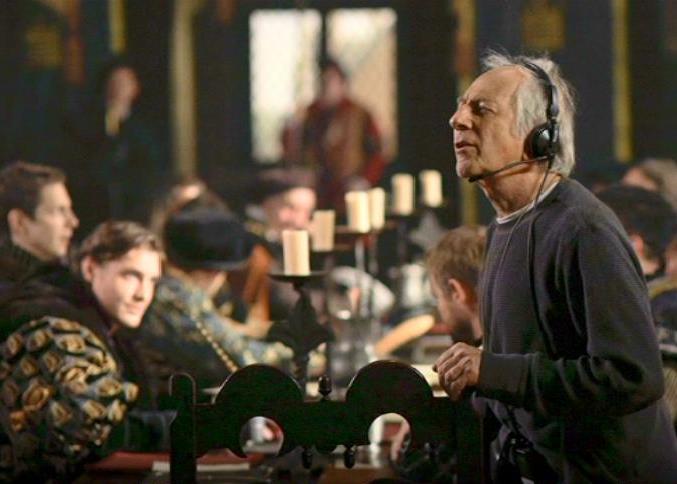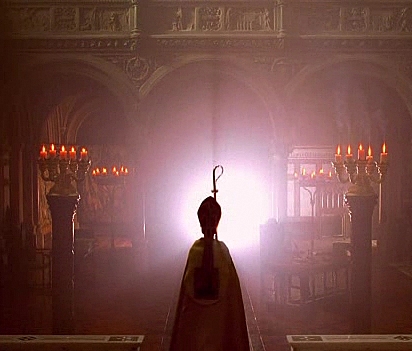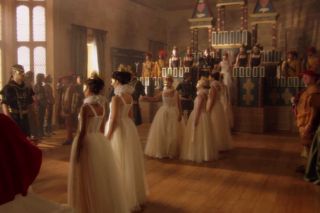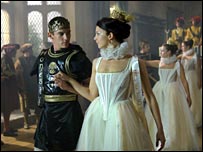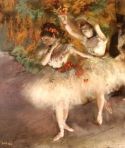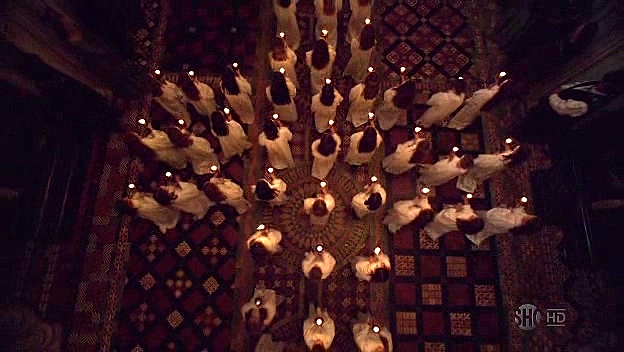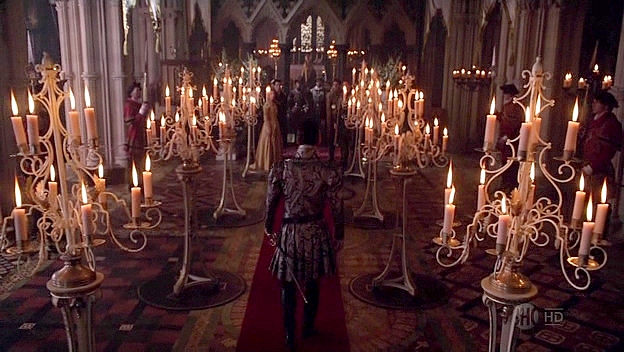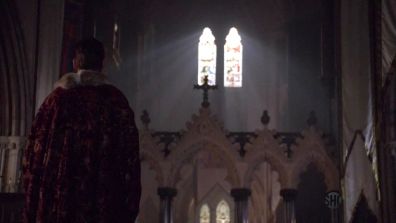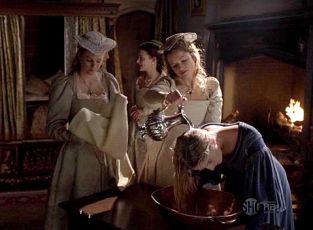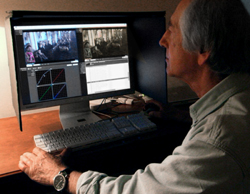CINEMATOGRAPHY of the Tudors
Jump to navigation
Jump to search
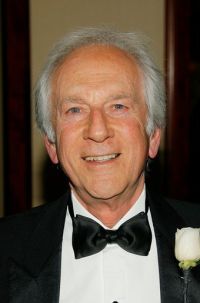 Another one of the Tudors Creators is the award winning cinematographer Ousama (Ossi) Rawi, csc, bsc (left) Director of Photography for The Tudors Click EasyEdit to update this page! (Don't see the EasyEdit button above? <a href="../#signin" target="_self">Sign in</a> or <a href="../accountnew" target="_self">Sign up</a>.) |
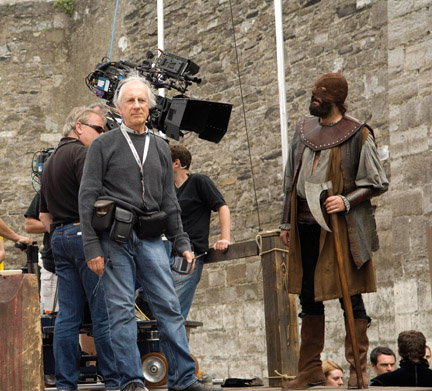 Born: 3 March 1939, Baghdad, Iraq. Born: 3 March 1939, Baghdad, Iraq.Career: Photographed & directed numerous commercials. Was married [?-1996] to actress Rita Tushingham. (Dr. Zhivago) Awards: As director of photography: CSC Award TV Drama nom [2002] for 'Ruby's Bucket of Blood'; ASC TV Award nomination [2008] for 'The Tudors' [ep #1, 2nd season]. As director: Mystfest 'Best Film' nomination [1987] for 'A Judgment in Stone'. Ousama Rawi started his career in cinematography in the U.K. shooting newsreels for TV, but soon went freelance and began shooting commercials and feature films out of London. A trip to Canada to shoot a U.K./Canadian co-production changed his life when a commercial production company there offered him a 12-month contract. He went and stayed for almost 12 years. By 1994, he decided to move back into long-form and moved to Los Angeles. His credits include Avenging Angelo, Vinegar Hill, Parting Shots and Family Sins. |
| Here in an interview with <a class="external" href="http://images.google.ca/imgres?imgurl=http://www.csc.ca/imageLibrary/nov08/Tudors_4.jpg&imgrefurl=http://www.csc.ca/news/default.asp%3FaID%3D1343&usg=__6XAAyv1rGGOQq8eZZAlbt4Eawr0=&h=391&w=432&sz=106&hl=en&start=3&tbnid=okzYvgN1REU8wM:&tbnh=114&tbnw=126&prev=/images%3Fq%3DOusama%2BRawi%26gbv%3D2%26hl%3Den%26sa%3DG" rel="nofollow" target="_blank" title="Canadian Society of Cinematographers">Canadian Society of Cinematographers</a> written by Dan Angus in November 2008, Ossi Rawi discusses The Tudors: "For the viewer who cares about such things, the immediate assumption is: "this is 35-mm film." That viewer would be wrong. Seasons one and two were shot with the Panavision-modified ("Panavised") Sony F900 HD digital video camera, Rawi told CSC News in telephone and email interviews from Ireland, where the series was being shot. "I contemplated using the more modern F950, but I decided against it. Although it gave me the full-colour space of 4:4:4 compared to the F900's 4:2:2, the major disadvantage of the F950 for me was the fact that the capture part and the recording part of the camera are separated by a cable. This would make it inconvenient for shots where the camera would start low on a dolly and jib up to maximum height, having to cope with one more cable that could get entangled. Also I found that when in Steadicam mode, the cable was a hindrance." |
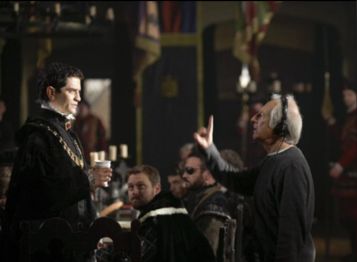 He said the camera he wanted from the start was the Panavision Genesis. "In my opinion, it was the most convenient and cinematographer-friendly HD camera. It has a full 35-mm-size chip and takes standard 35mm Panavision lenses. They are true and tested lenses, and by using them I would get normal 35-mm look depth of field, something grossly lacking in the small-chip HD cameras." He said the camera he wanted from the start was the Panavision Genesis. "In my opinion, it was the most convenient and cinematographer-friendly HD camera. It has a full 35-mm-size chip and takes standard 35mm Panavision lenses. They are true and tested lenses, and by using them I would get normal 35-mm look depth of field, something grossly lacking in the small-chip HD cameras."However, the budget wasn't there to carry four Genesis cameras on the first two seasons. "When season three came along, I had a long discussion with Panavision, and we somehow worked it out that I could have my first-choice camera, the Genesis." Rawi, who had never before shot a series, said his only previous experience with HD was in 2003 on a Showtime cable movie, DC 9/11: Time of Crisis, shot on a Panavised Sony F900. The DOP said the lighting design for "The Tudors" would have been different had it been shot on film, but the HDTV decision had been made by Showtime. |
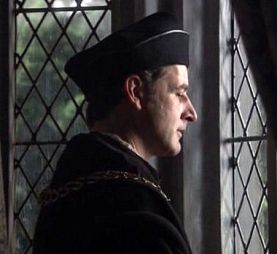 "My first task was to fully understand the characteristics of the camera of choice and learn its idiosyncrasies. Its limited exposure latitude, which I found to be seven stops, was a big impediment. Its biggest weakness is the inability to effectively deal with highlights. Even with the seven-stop latitude, there were only three stops available in overexposure before clipping occurred. I had to learn to fool the camera and to make the clipped highlights acceptable in the broadcast legal sense and appear to be completely normal to the viewer's eye." Rawi deftly handled the question: Would you rather have shot on film? "Much as I love film and consider it still the best image-capture medium available today, I found the challenge of using the emerging new HD medium - and trying to make it look no different from film - to be an exciting endeavour. It has to be remembered, film took over 100 years to arrive at its current state of excellence. HD has only had 10 years and it's already knocking on film's door. Imagine where it will be in another 10 years." |
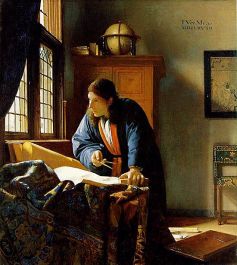 Rawi said he deliberately created deep shadows and bright highlights to increase contrast because "the HD cameras I was utilizing constantly wanted to flatten the images. I had to learn how to successfully fight that tendency. For inspiration, I borrowed from the great master painters, mainly Caravaggio, Vermeer and Renoir. 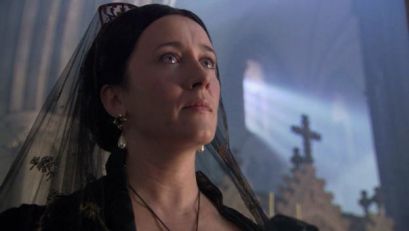 "Given that in 16th-century England the only source of light was natural daylight - sunny or grey - or the flame from candles, torches, flambeaux or fireplaces, I decided to restrict myself to mimicking those sources of light." |
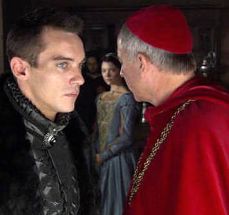 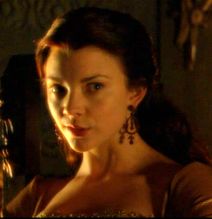 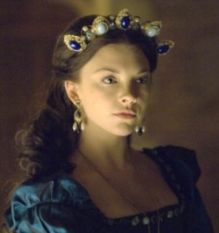 |
Rawi's next decision: What kind of candles? "I had special candles made to test on camera. I selected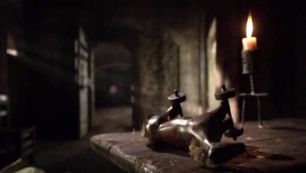 the best parchment colour for the wax that both the production designer and I determined was authentic looking enough for the wax colour of the day. I then had them made with a single wick, a double wick and a triple wick. This gave me three different levels of light output to test. The triple-wick candles, though much brighter, making my work easier, were unacceptable to the F900 cameras. They were clipped immediately, thereby having virtually no detail registered the best parchment colour for the wax that both the production designer and I determined was authentic looking enough for the wax colour of the day. I then had them made with a single wick, a double wick and a triple wick. This gave me three different levels of light output to test. The triple-wick candles, though much brighter, making my work easier, were unacceptable to the F900 cameras. They were clipped immediately, thereby having virtually no detail registered 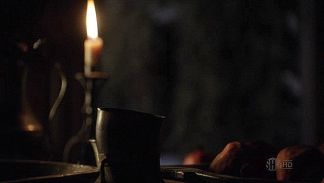 wherever the candles were placed within the image. It was as if someone punched holes in the image wherever there was a candle flame. wherever the candles were placed within the image. It was as if someone punched holes in the image wherever there was a candle flame.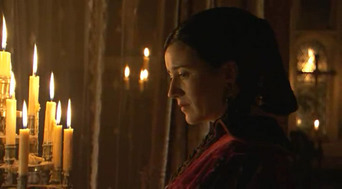 "This would have made the images unacceptable for transmission. I settled for the double-wicked candles. My decision enabled me to get adequate illumination without the danger of clipping. Thus I was often able to use the candles themselves that were in shot as the actual source of light. Also, I measured the colour temperature of the different flames and gelled any of the artificial lights I was using to match the candles, the flambeaux and the fireplaces. "This would have made the images unacceptable for transmission. I settled for the double-wicked candles. My decision enabled me to get adequate illumination without the danger of clipping. Thus I was often able to use the candles themselves that were in shot as the actual source of light. Also, I measured the colour temperature of the different flames and gelled any of the artificial lights I was using to match the candles, the flambeaux and the fireplaces. "Needless to say," Rawi chuckled, "many a costume and a great deal of the crew's clothing was ruined or needed special cleaning because of the constantly dripping hot wax from the quick burning of the special double-wicked candles. They would burn down to one inch after 20 minutes. Candle height continuity was a nightmare for the props." Rawi added, "The biggest challenge on all three seasons so far has been my decision to give the show a feature -film look in spite of having an episodic television schedule. We have 10 days to shoot a one-hour episode. For Showtime, an hour program is 56-minutes long. This necessitated a very fast blocking and lighting pace that I had to inspire my crew to get on board with. I can honestly say that the crew - camera, grip and lighting, which has been virtually unchanged for three seasons - are all working in sync, intuitively and totally understanding each other's needs like a well-oiled machine." |
| While "The Tudors" is shot in Ireland - 75 per cent of the interiors are shot on standing sets at Ardmore Studios in Dublin - post-production is done in Toronto at Technicolor and Dufferin Gate. Rawi said the series uses three Ardmore stages and "sometimes we spill over temporarily to a fourth. It is where we are based and feels like home to us all. The Irish producer, Morgan O'Sullivan, and the Canadian producer, Sheila Hockin, have been a joy to work with." Rawi also cited Ross Cole, senior colourist at Technicolor, for his "exemplary work on all episodes of the series. He has been the colourist from the beginning and continues to be the colourist on season three. He fully understands the style of the show and produces flawless work." |
Ousama Rawi, uses 3cP on the set of "The Tudors" For more on this technology click here: <a class="external" href="http://images.google.ca/imgres?imgurl=http://3cp.gammadensity.com/images/Ousama%2520Rawi%25206x7-300dpi.jpg&imgrefurl=http://3cp.gammadensity.com/index-2-prod-charts.html&usg=__p0arVdr1LTuzLx2-foaW2KGk2wU=&h=194&w=250&sz=75&hl=en&start=6&tbnid=ulcOp0AhHXLooM:&tbnh=86&tbnw=111&prev=/images%3Fq%3DOusama%2BRawi%26gbv%3D2%26hl%3Den%26sa%3DG" rel="nofollow" target="_blank" title="3CP - Power of Consistency">3CP - Power of Consistency</a> |
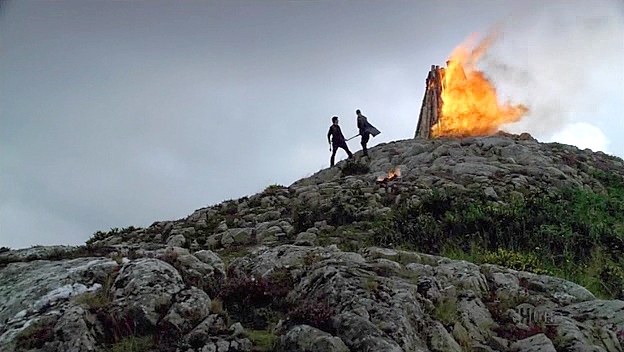 |
